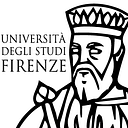The Coastal village of Zvërnec
From Firenze University Press Book: Five Albanian Villages
Antonio Laurìa, University of Florence
Valbona Flora, University of Florence
The village of Zvërnec is located in the southern part of the Lagoon of Nartë, on a promontory over a small gulf (Gjiri i vogël) which looks like a miniature of the ‘great’ Gulf of Vlorë (Gjiri i Vlorës). Vlorë, which lies in a southeasterly direction, is the only city with which the village is directly linked by land. Zvërnec consists of two different quarters: the oldest part of the settlement located on the hill and the more recent quarter of the Vlachs , which occupies the part of the village next to the shore. The inhabitants of both quarters speak Albanian and Greek and have dual citizenship (the Vlachs also speak a dialect that is related to Romanian). The village gave its name to the Island of Zvërnec, made famous by the presence of the Byzantine Church of the Dormition of Mary (category I Cultural Monument), which every year attracts many faithful and tourists alike, both Albanian and foreign. The church was part of an old monastic complex, of which only a few buildings remain today. In addition to the church, there is another category I Cultural Monument in the area of Zvërnec: the fortification surrounding a settlement from the 6th and 5th centuries B.C., known as Kështjella e Treportit (Castle of Treporti). Fragments of the ancient walls are preserved today on the hill of Treporti and under the sea along the south-west coast of the village.
Being part of the Protected Landscape of Vjosë-Nartë is undoubtedly an added value for Zvërnec. Within this protected area — one of the richest habitats in terms of biodiversity of the whole of Albania — there are five sites classified as Natural Monuments, including the Island of Zvërnec. Also worth mentioning for their peculiarity are some military structures scattered throughout the area. Among these, the most significant are the four monumental bunkers located on the plain of Zhukë, which have a high tourism potential not only due to their historical value, but also and especially for the quality of the landscape in which they are located. Zvërnec has a kryeplak (village headman) who serves as an intermediary between the inhabitants and public institutions. The inhabitants of the village are Orthodox Christians and every year, on August 15th, they celebrate the Feast of the Dormition of Mary in the church on the island. In 2018 the village had 1,332 registered residents; of these, 1,101 have emigrated abroad (mostly to Greece) and 24 have emigrated to Vlorë or Tirana. Emigrants thus are approximately 85% of the total population, and the average age of the people effectively living in the village (around 207 people) is around 62 years. The migrant families return to the village almost exclusively during the summer months, while some of the domestic migrants also return for the Orthodox Easter.
The main driver of tourism development consists in beach and seaside activities, which have seen a constant growth in recent years, attracting mostly families in search of places that are more isolated and less crowded than the traditional destinations on the Southern Albanian coast. The houses used as accommodation are managed directly by their owners (usually migrants who return to the village in summer). During the rest of the year, Zvërnec is left in the custody of the elderly members of the community, who eagerly look forward to seeing their children and grandchildren. Depopulation and emigration are here — perhaps more than in the other villages analysed in this book — a social wound that does not heal and also constitute factors that every local development strategic proposals must inevitably take into account. These proposals must necessarily rely on the beauty and variety of the landscape, which, however, still bears the marks of the industrial past of the area, and is under risk of new menaces that endanger its already fragile balance.
DOI: https://doi.org/10.36253/978–88–5518–175–4.03
Read Full Text: https://fupress.com/capitoli/the-coastal-village-of-zvernec/4721
